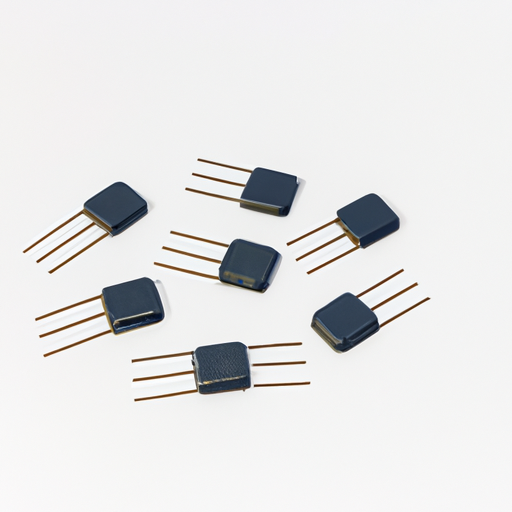Overview of S6008L Resistors and Their Applications
Overview of S6008L Resistors and Their Applications
The S6008L resistors are a specific type of resistor that can be utilized in various electronic applications. While detailed articles and case studies on the S6008L resistors may not be readily available, we can explore the core functional technology of resistors in general and highlight effective application development cases that demonstrate their utility.
Core Functional Technology of Resistors

Core Functional Technology of Resistors
1. **Basic Functionality**: Resistors are passive components that limit the flow of electric current in a circuit. They are essential for controlling voltage and current levels, ensuring that electronic devices operate within safe parameters.
| 2. Types of Resistors | |
| 3. Material Composition | The performance of resistors is influenced by their material composition. Common materials include: |
4. **Power Rating**: Resistors are rated for the maximum power they can dissipate without overheating, which is crucial for reliability in circuit designs. Exceeding this rating can lead to failure.
5. **Tolerance**: This indicates the allowable variation from the stated resistance value, which is important for precision applications. Common tolerances include ±1%, ±5%, and ±10%.
6. **Temperature Coefficient**: This parameter measures how much the resistance changes with temperature, impacting the performance of resistors in temperature-sensitive applications.
Application Development Cases
Application Development Cases
1. **Voltage Divider Circuits**: Resistors are integral in voltage divider configurations, allowing designers to obtain specific voltage levels from a higher voltage source. This is particularly useful in sensor applications where precise voltage levels are required for analog-to-digital conversion.
2. **Current Limiting in LED Circuits**: Resistors are used to limit the current flowing through LEDs, preventing damage and ensuring optimal brightness. This application is critical in consumer electronics, automotive lighting, and decorative lighting solutions.
3. **Signal Conditioning**: In audio and communication systems, resistors work alongside capacitors and inductors to filter signals, shape frequency response, and enhance overall signal integrity. This is essential for high-fidelity audio applications and reliable data transmission.
4. **Pull-Up and Pull-Down Resistors**: In digital circuits, pull-up and pull-down resistors ensure that inputs to logic gates are at defined logic levels when no active devices are connected. This is crucial for reliable operation in microcontroller and FPGA applications, preventing floating inputs.
5. **Temperature Sensing with Thermistors**: Thermistors, a type of resistor, are widely used in temperature sensing applications. Their resistance changes with temperature, allowing for precise temperature measurements in HVAC systems, automotive applications, and consumer electronics.
6. **Power Management**: Resistors play a vital role in power supply circuits for load balancing and creating reference voltages. They are essential for the stable operation of power management integrated circuits (PMICs), ensuring efficient energy distribution in electronic devices.
Conclusion
Conclusion
Resistors, including specific types like the S6008L, are fundamental components in electronic design. Their ability to control current and voltage makes them indispensable across a wide range of applications, from simple circuits to complex systems. Understanding their core functionalities and applications can lead to more effective and innovative designs in electronics. For specific articles and case studies, consulting technical journals, manufacturer datasheets, and application notes from resistor manufacturers would provide deeper insights into the S6008L and its applications.
Overview of S6008L Resistors and Their Applications
Overview of S6008L Resistors and Their Applications
The S6008L resistors are a specific type of resistor that can be utilized in various electronic applications. While detailed articles and case studies on the S6008L resistors may not be readily available, we can explore the core functional technology of resistors in general and highlight effective application development cases that demonstrate their utility.
Core Functional Technology of Resistors

Core Functional Technology of Resistors
1. **Basic Functionality**: Resistors are passive components that limit the flow of electric current in a circuit. They are essential for controlling voltage and current levels, ensuring that electronic devices operate within safe parameters.
| 2. Types of Resistors | |
| 3. Material Composition | The performance of resistors is influenced by their material composition. Common materials include: |
4. **Power Rating**: Resistors are rated for the maximum power they can dissipate without overheating, which is crucial for reliability in circuit designs. Exceeding this rating can lead to failure.
5. **Tolerance**: This indicates the allowable variation from the stated resistance value, which is important for precision applications. Common tolerances include ±1%, ±5%, and ±10%.
6. **Temperature Coefficient**: This parameter measures how much the resistance changes with temperature, impacting the performance of resistors in temperature-sensitive applications.
Application Development Cases
Application Development Cases
1. **Voltage Divider Circuits**: Resistors are integral in voltage divider configurations, allowing designers to obtain specific voltage levels from a higher voltage source. This is particularly useful in sensor applications where precise voltage levels are required for analog-to-digital conversion.
2. **Current Limiting in LED Circuits**: Resistors are used to limit the current flowing through LEDs, preventing damage and ensuring optimal brightness. This application is critical in consumer electronics, automotive lighting, and decorative lighting solutions.
3. **Signal Conditioning**: In audio and communication systems, resistors work alongside capacitors and inductors to filter signals, shape frequency response, and enhance overall signal integrity. This is essential for high-fidelity audio applications and reliable data transmission.
4. **Pull-Up and Pull-Down Resistors**: In digital circuits, pull-up and pull-down resistors ensure that inputs to logic gates are at defined logic levels when no active devices are connected. This is crucial for reliable operation in microcontroller and FPGA applications, preventing floating inputs.
5. **Temperature Sensing with Thermistors**: Thermistors, a type of resistor, are widely used in temperature sensing applications. Their resistance changes with temperature, allowing for precise temperature measurements in HVAC systems, automotive applications, and consumer electronics.
6. **Power Management**: Resistors play a vital role in power supply circuits for load balancing and creating reference voltages. They are essential for the stable operation of power management integrated circuits (PMICs), ensuring efficient energy distribution in electronic devices.
Conclusion
Conclusion
Resistors, including specific types like the S6008L, are fundamental components in electronic design. Their ability to control current and voltage makes them indispensable across a wide range of applications, from simple circuits to complex systems. Understanding their core functionalities and applications can lead to more effective and innovative designs in electronics. For specific articles and case studies, consulting technical journals, manufacturer datasheets, and application notes from resistor manufacturers would provide deeper insights into the S6008L and its applications.









